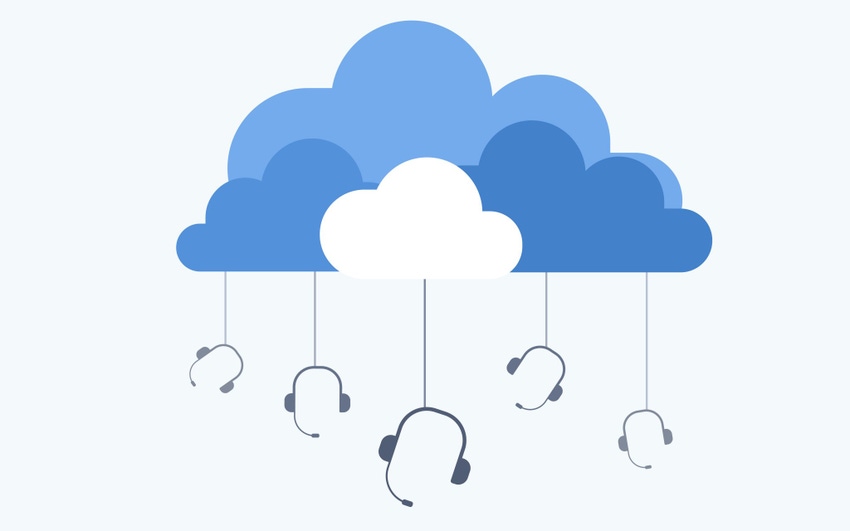Experts are convinced more data can make better agents.
March 23, 2022

ENTERPRISE CONNECT — The pandemic has reshaped many industries, but perhaps most dramatically, the contact center. No longer congregating in large facilities, the spread of COVID-19 forced thousands of agents to work at home — indefinitely. As a result, companies had to quickly find the right tools to monitor employee productivity.
 LiveVox is one firm offering a next-generation platform to contact centers to meet their post-pandemic needs. Louis Summe is the company’s CEO and Nick Bandy is CMO. They spoke at Enterprise Connect in Orlando, Florida, this week about contact center trends shaping 2022 and beyond, including progress for agent work. They also focused on what contact centers will do with the influx of new data.
LiveVox is one firm offering a next-generation platform to contact centers to meet their post-pandemic needs. Louis Summe is the company’s CEO and Nick Bandy is CMO. They spoke at Enterprise Connect in Orlando, Florida, this week about contact center trends shaping 2022 and beyond, including progress for agent work. They also focused on what contact centers will do with the influx of new data.
Creating Efficiencies for Agents
As many agents now work remotely, how do employers make the work experience more seamless? LiveVox commissioned a study by Forrester in which the research firm studied how many different applications agents used daily. The answer was seven.
We recently compiled a list of 20 top CCaaS providers offering products and services via channel partners. |

LIveVox’s Louis Summe at Enterprise Connect 2022 in Orlando.
“That’s a lot of complexity,” Summe said. “It should be down to one.”
Shrinking applications is necessary for workflow. Establishing this kind of efficiency frees up agents to be proficient in other tools and technologies, navigating beyond voice, to chat to email to SMS.
That said, reducing complexity is becoming more of a reality these days with AI and machine learning. Augmentation technology – where a contact center brings together tools like virtual agents and automation – should handle the more mundane tasks, empowering agents to work on complex customer demands.
LiveVox says its new contact center CRM enables a user to easily pull data out of different disparate systems of records, compiling it into one file. It’s then accessible for a storefront employee or a contact center agent. The same customer data view is available to both employees, Bandy said.
Making the agent experience more succinct and efficient is not only good for the bottom line; it’s critical for employee retention, now more than ever. This is partly because recruiting and retaining agents is becoming increasingly difficult. The rate at which people leave contact centers averages around 33%.
Interaction Analytics
This new technology helps the workflow for the remote agent and also means far more data is now being collected than prior to the pandemic.
Take agent scorecards, for example. In the past, agent supervisors would randomly select about 2% of all calls from agents to review. Now, automation can assess 100% of phone calls, meaning a manager can go over the best and the worst calls, Summe said. In a remote environment, managers can always monitor and review agent calls. Automated screening serves as a de facto supervisor and pushes employees to perform better.
Understanding the data collected by contact centers means having a grasp on “interaction analytics,” the analytics surrounding the agent’s various levels of interaction with the customer, such as the analysis of a phone call or email. Interaction analytics allows this analysis to happen in an automated fashion as well so that more and more data are collected.
“This simply makes the call center a more valuable repository of information,” Summe said. “What people like to refer to as the ‘voice of the customer’ lives in the contact center more than it has and you can access it more easily.”
Summe added that marketing and sales departments of companies want to understand how their products are getting received and the contact center is now better capable to support that type of strategic analysis.
This kind of data may be more likely found in a contact center than anywhere else, the experts said.

LiveVox’s Nick Bandy
“There are three big buckets of data that you get relative to your customer,” Bandy said. “Brick and mortar is one, but it’s on the decline. Digital is good to an extent, but you really don’t have the conversations there. But I think the richest is the data from the customers you’re having conversations with every day.”
He added that through that data, a company can determine which are the best and least desirable customers.
“What you can glean from all that is whether to switch a product or to switch pricing or to switch a service — all those kinds of things. It’s so valuable. I think it’s becoming more and more the epicenter of the organizational customer experience.”
Enterprise Connect is part of the Informa Tech portfolio of live events and digital platforms. it is operated by Informa, the parent company of Channel Futures.
Want to contact the author directly about this story? Have ideas for a follow-up article? Email Claudia Adrien or connect with her on LinkedIn. |
About the Author(s)
You May Also Like


